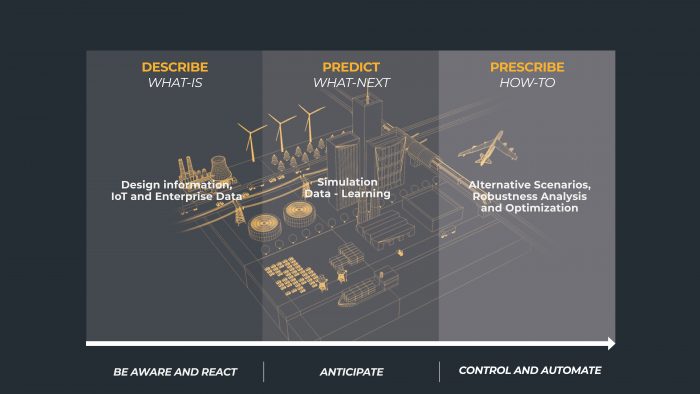Increase Network Robustness in the Face of Uncertainty
Since they reproduce the behavior of the network, Simulation Digital Twins offer the advantage of testing the possible evolutions of the network and optimizing its robustness to changes.
RTE, the French electricity TSO, has been using Cosmo Tech’s simulation digital twin technology for several years to simulate and optimize its asset management strategy across several use cases. RTE tests the effect of its maintenance and investment policies at different time scales according to the scenarios considered, notably identifying the impacts on the health of the network, the quality of service, and the network’s environmental performance. The results of these simulations have informed RTE’s teams about their ability to invest and maintain their assets in an optimal way for the years to come and to assess the robustness and resilience of the power system in line with different risk scenarios.
RTE has used this technology to justify its business plan to the French Energy Regulatory Commission (CRE). By sharing objective data and showing that increasing the maintenance budget would result in substantial savings on the overall budget in the medium term, RTE was able to obtain a 15% budget increase for its asset management from the CRE. In its public report, CRE encourages the dissemination of this approach.

Thanks to simulation digital twin technology, uncertainty can be controlled and robustness optimized by quantifying the consequences of that uncertainty. For example, the impacts of coastal weather conditions on the aging of metal towers as well as the impact of storms can both be considered in scenario simulations.
The robustness of maintenance and asset renewal strategies can also be optimized according to potentially large variations in the evolution of the network. Depending on the transformation of the network, electricity flows can change considerably and a power line that is secondary today may be essential in fifteen years to supply three or four wind farms, or to ensure the stability of a city’s power supply when a nuclear plant has closed.









![[Video] Traditional vs Resilient Supply Chain Planning: Which side are you on?](jpg/adobestock_101964830-350x350.jpg)

